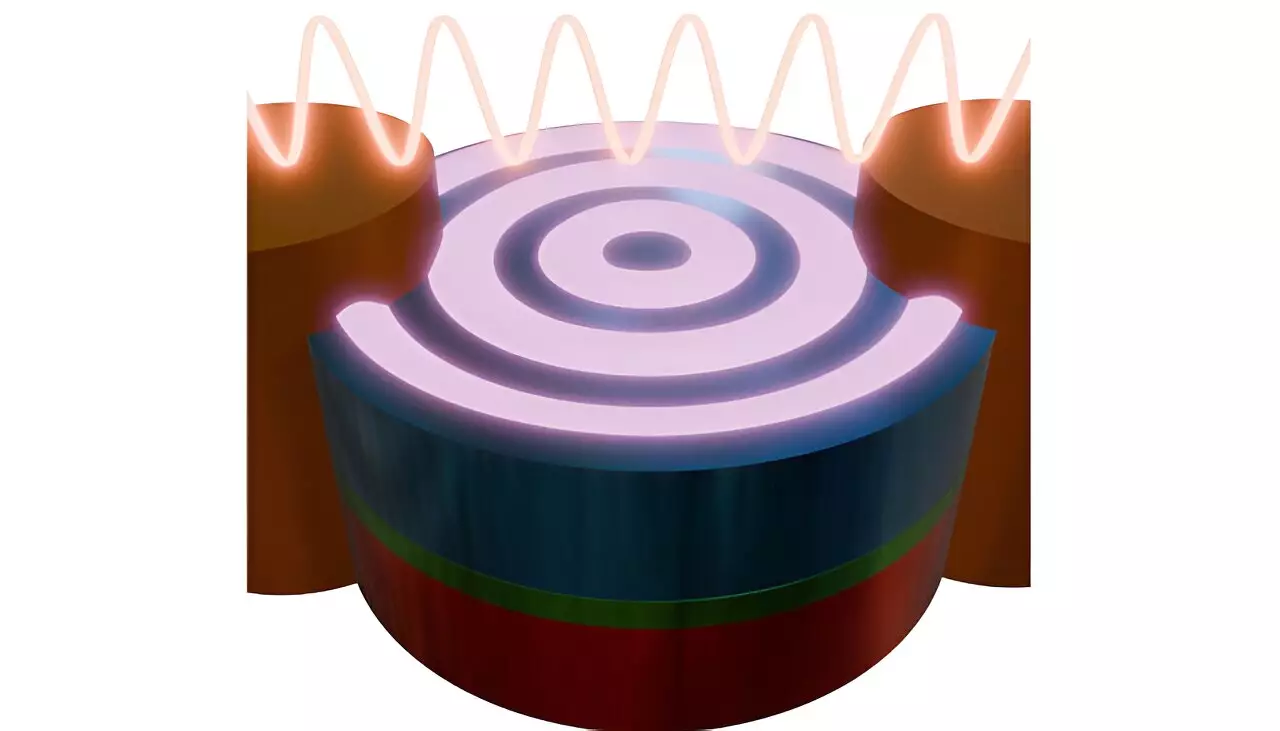

In an era where the need for more compact and energy-efficient computing devices is paramount, a groundbreaking study from esteemed research institutions including the University of Vienna, the Max Planck Institute for Intelligent Systems, and the Helmholtz Centers has ignited new hope. Published in the prestigious journal Science Advances, this study presents innovative findings on the generation and application of spin waves for reprogrammable magnonic circuits. Spin waves, essentially the quanta of magnons, represent a new frontier that could reshape the landscape of conventional computing technologies.
Modern-day computing devices, be they laptops or smartphones, fundamentally rely on billions of transistors built using complementary metal oxide semiconductor (CMOS) technology. However, this architecture faces significant challenges as devices shrink in size. These challenges arise not only from physical limitations inherent in semiconductor materials but also from exorbitant power consumption and energy dissipation. Such issues have led to a growing consensus within the scientific community that alternative computing models must be explored. This research shines a light on one of the most promising alternatives: magnonics.
To elucidate the operation of magnonic systems, consider the analogy of a calm lake disturbed by a stone. The ripples that propagate are akin to spin waves propagating through a magnetic material, facilitating the transmission of information with minimal energy loss. As articulated by Sabri Koraltan, the lead author of the study, this effective transport of energy represents a fascinating way to harness magnetic phenomena. However, realizing these waves at short wavelengths—crucial for creating compact magnonic devices—presents a significant hurdle, particularly with current fabrication technologies that rely on advanced, clean-room-based processes.
In a significant leap forward, the researchers introduced an elegant solution involving the direct flow of electric current through a magnetic stack with intricate swirling magnetic patterns. This ingenious approach enables the generation of spin waves with unprecedently high efficiency. As research coordinator Sebastian Wintz elucidates, the application of alternating current in synthetic ferrimagnetic vortex pairs yields spin-wave emissions that far surpass current capabilities. This development marks a pivotal moment in the field of magnonics, paving the way for enhanced device miniaturization.
Utilizing high-resolution imaging technology, the research team was able to visualize these spin waves at the nanoscale. The ‘Maxymus’ X-ray microscope, situated at the BESSY II electron synchrotron in Berlin, played a vital role in validating their theoretical predictions. By employing such cutting-edge methods, the researchers were able to observe the unique properties of spin waves, further substantiating their findings. This experimental demonstration not only confirmed the generation of spin waves but also showcased their feasibility for practical applications.
An exciting aspect of this research involves the incorporation of materials that can adjust their magnetization in response to applied strain. This advancement signifies the potential for real-time control over the direction of spin waves through current modulation. Such flexibility could be transformational, enabling the development of active magnonic devices that can reconfigure themselves based on operational demands. As Koraltan points out, this dynamic steering capability represents a significant milestone in active magnonic device technology.
The implications of this research extend far beyond academic curiosity. The ability to manipulate spin waves empowers the creation of reprogrammable magnonic circuits, which could lead to adaptive computing systems capable of functioning with substantially lower energy requirements. If harnessed appropriately, these findings could herald the advent of next-generation computing technologies, addressing the pressing challenges faced by traditional semiconductor systems.
The study from these prominent research institutions marks a significant step toward revolutionizing computing technologies through the innovative use of spin waves. As researchers explore the vast potentials of magnons, we stand on the brink of a new era in computing, characterized by efficiency, adaptability, and sustainability.
Foreign direct investment (FDI) in developing nations has long been heralded as a path to…
As spring beckons in April and May, stargazers have the unique opportunity to witness nature's…
Active matter, a term that refers to systems where individual components can consume energy to…
In a groundbreaking development, a research team led by Prof. Chen Changlun at the Hefei…
The inevitability of aging is experienced differently across individuals, influenced by a complex interplay of…
When we delve into the cataclysmic events that led to the destruction of Pompeii almost…
This website uses cookies.